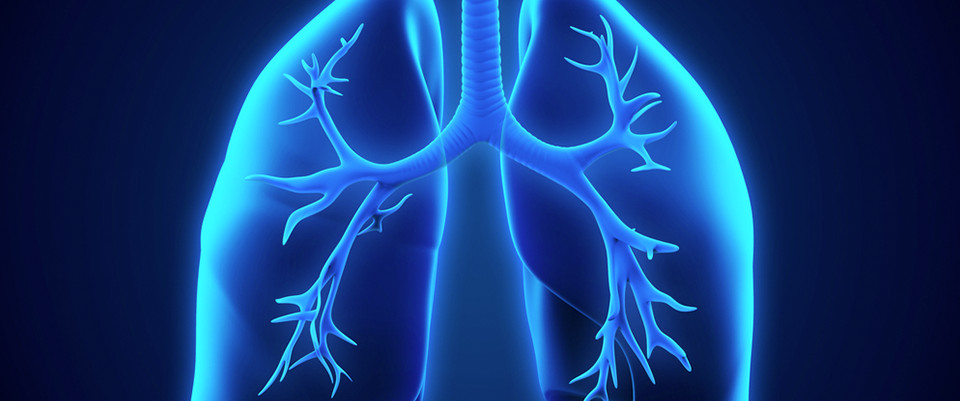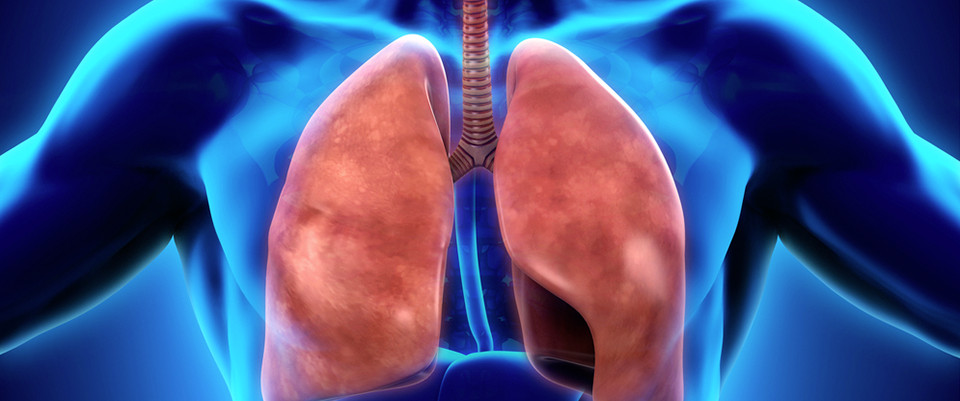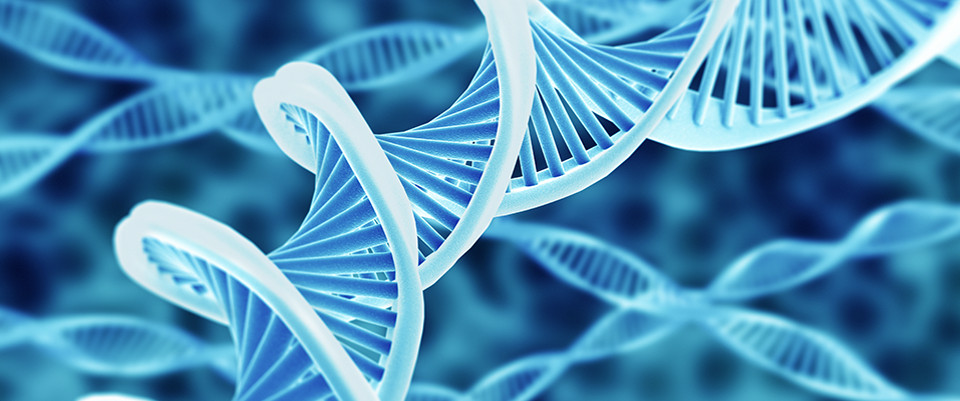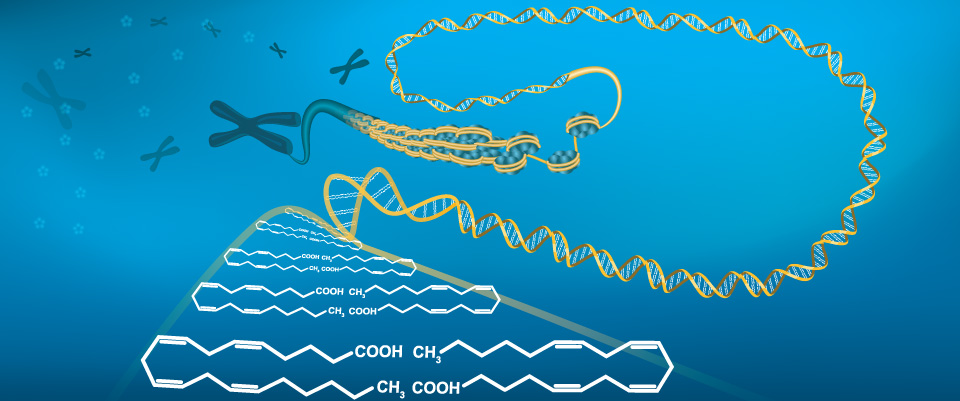PubMed
Ionizing Radiation Impairs T Cell Activation by Affecting Metabolic Reprogramming.
Ionizing Radiation Impairs T Cell Activation by Affecting Metabolic Reprogramming.
Int J Biol Sci. 2015;11(7):726-36
Authors: Li HH, Wang YW, Chen R, Zhou B, Ashwell JD, Fornace AJ
Abstract
Ionizing radiation has a variety of acute and long-lasting adverse effects on the immune system. Whereas measureable effects of radiation on immune cell cytotoxicity and population change have been well studied in human and animal models, little is known about the functional alterations of the surviving immune cells after ionizing radiation. The objective of this study was to delineate the effects of radiation on T cell function by studying the alterations of T cell receptor activation and metabolic changes in activated T cells isolated from previously irradiated animals. Using a global metabolomics profiling approach, for the first time we demonstrate that ionizing radiation impairs metabolic reprogramming of T cell activation, which leads to substantial decreases in the efficiency of key metabolic processes required for activation, such as glucose uptake, glycolysis, and energy metabolism. In-depth understanding of how radiation impacts T cell function highlighting modulation of metabolism during activation is not only a novel approach to investigate the pivotal processes in the shift of T cell homeostasis after radiation, it also may lead to new targets for therapeutic manipulation in the combination of radiotherapy and immune therapy. Given that appreciable effects were observed with as low as 10 cGy, our results also have implications for low dose environmental exposures.
PMID: 26078715 [PubMed - in process]
Functional divergence of diterpene syntheses in the medicinal plant Salvia miltiorrhiza Bunge.
Functional divergence of diterpene syntheses in the medicinal plant Salvia miltiorrhiza Bunge.
Plant Physiol. 2015 Jun 15;
Authors: Cui G, Duan L, Jin B, Qian J, Xue Z, Shen G, Snyder JH, Song J, Chen S, Huang L, Peters RJ, Qi X
Abstract
The medicinal plant Salvia miltiorrhiza produces various tanshinone diterpenoids that have pharmacological activities such as vasorelaxation, against ischemia-reperfusion injury, and antiarrhythmic effects. Their biosynthesis is initiated from the general diterpenoid precursor (E,E,E)-geranylgeranyl diphosphate by sequential reactions catalyzed by copalyl diphosphate synthase (CPS) and kaurene synthase-like (KSL) cyclases. Here is reported characterization of these enzymatic families from S. miltiorrhiza, which has led to the identification of novel pathways, including roles for separate CPSs in tanshinone production in roots versus aerial tissues (SmCPS1 and SmCPS2, respectively), as well as the novel production of ent-13-epi-manoyl oxide by SmCPS4 and SmKSL2 in floral sepals. The conserved SmCPS5 is involved in gibberellin plant hormone biosynthesis. Down-regulation of SmCPS1 by RNAi resulted in substantial reduction of tanshinones, and metabolomics analysis revealed 21 potential intermediates, indicating a complex network for tanshinone metabolism defined by certain key biosynthetic steps. Notably, the correlation between conservation pattern and stereochemical product outcome of the CPSs observed here, suggests a degree of correlation that, especially when combined with the identity of certain key residues, may be predictive. Accordingly, this study provides molecular insights into the evolutionary diversification of functional diterpenoids in plants.
PMID: 26077765 [PubMed - as supplied by publisher]
NMR metabolomics show evidence for mitochondrial oxidative stress in a mouse model of polycystic ovary syndrome.
NMR metabolomics show evidence for mitochondrial oxidative stress in a mouse model of polycystic ovary syndrome.
J Proteome Res. 2015 Jun 16;
Authors: Selen ES, Bolandnazar Z, Tonelli M, Bütz DE, Haviland JA, Porter WP, Assadi-Porter FM
Abstract
Polycystic ovary syndrome (PCOS) is associated with metabolic and endocrine disorders in women of reproductive age. The etiology of PCOS is still unknown. Mice prenatally treated with glucocorticoids exhibit metabolic disturbances that are similar to those seen in PCOS women. We used an untargeted nuclear magnetic resonance (NMR)-based metabolomics approach to understand the metabolic changes occurring in the plasma and kidney over time in female glucocorticoid treated (GC-treated) mice. There were significant changes in plasma amino acid levels (valine, tyrosine, and proline), and their intermediates (2-hydroxybutyrate, 4-aminobutyrate, taurine), whereas in kidneys, the TCA cycle metabolism (citrate, fumarate and succinate), and the pentose phosphate (PP) pathway products (inosine and uracil) are changed significantly (p<0.05) from 8 to 16 weeks of age. Levels of NADH, NAD+, NAD+/NADH, and NADH redox in kidneys indicate increased mitochondrial oxidative stress from 8 to 16 weeks in GC-treated mice. These results indicate that altered metabolic substrates in plasma and kidney of treated mice are associated with altered amino acid metabolism, increased cytoplasmic PP, and increased mitochondrial activity leading to a more oxidized state. This study identifies biomarkers associated with metabolic dysfunction in kidney mitochondria of the prenatal gluococorticoid treated mouse model of PCOS that may be used as an early predictive biomarker of oxidative stress in the PCOS metabolic disorder in women.
PMID: 26076986 [PubMed - as supplied by publisher]
Roux-en-Y gastric bypass surgery, but not calorie restriction, reduces plasma branched-chain amino acids in obese women independent of weight loss or the presence of type 2 diabetes.
Related Articles
Roux-en-Y gastric bypass surgery, but not calorie restriction, reduces plasma branched-chain amino acids in obese women independent of weight loss or the presence of type 2 diabetes.
Diabetes Care. 2014 Dec;37(12):3150-6
Authors: Lips MA, Van Klinken JB, van Harmelen V, Dharuri HK, 't Hoen PA, Laros JF, van Ommen GJ, Janssen IM, Van Ramshorst B, Van Wagensveld BA, Swank DJ, Van Dielen F, Dane A, Harms A, Vreeken R, Hankemeier T, Smit JW, Pijl H, Willems van Dijk K
Abstract
OBJECTIVE: Obesity and type 2 diabetes mellitus (T2DM) have been associated with increased levels of circulating branched-chain amino acids (BCAAs) that may be involved in the pathogenesis of insulin resistance. However, weight loss has not been consistently associated with the reduction of BCAA levels.
RESEARCH DESIGN AND METHODS: We included 30 obese normal glucose-tolerant (NGT) subjects, 32 obese subjects with T2DM, and 12 lean female subjects. Obese subjects underwent either a restrictive procedure (gastric banding [GB], a very low-calorie diet [VLCD]), or a restrictive/bypass procedure (Roux-en-Y gastric bypass [RYGB] surgery). Fasting blood samples were taken for the determination of amine group containing metabolites 4 weeks before, as well as 3 weeks and 3 months after the intervention.
RESULTS: BCAA levels were higher in T2DM subjects, but not in NGT subjects, compared with lean subjects. Principal component (PC) analysis revealed a concise PC consisting of all BCAAs, which showed a correlation with measures of insulin sensitivity and glucose tolerance. Only after the RYGB procedure, and at both 3 weeks and 3 months, were circulating BCAA levels reduced.
CONCLUSIONS: Our data confirm an association between deregulation of BCAA metabolism in plasma and insulin resistance and glucose intolerance. Three weeks after undergoing RYGB surgery, a significant decrease in BCAAs in both NGT as well as T2DM subjects was observed. After 3 months, despite inducing significant weight loss, neither GB nor VLCD induced a reduction in BCAA levels. Our results indicate that the bypass procedure of RYGB surgery, independent of weight loss or the presence of T2DM, reduces BCAA levels in obese subjects.
PMID: 25315204 [PubMed - indexed for MEDLINE]
Metabolomic profiling of human serum in lung cancer patients using liquid chromatography/hybrid quadrupole time-of-flight mass spectrometry and gas chromatography/mass spectrometry.
Related Articles
Metabolomic profiling of human serum in lung cancer patients using liquid chromatography/hybrid quadrupole time-of-flight mass spectrometry and gas chromatography/mass spectrometry.
J Cancer Res Clin Oncol. 2015 Apr;141(4):705-18
Authors: Chen Y, Ma Z, Li A, Li H, Wang B, Zhong J, Min L, Dai L
Abstract
PURPOSE: Lung cancer is one of the most common causes of death from cancer. Serum markers that enable diagnosis of the disease in the early stage have not been found.
METHODS: Serum samples were collected from 30 healthy volunteers and from 30 lung cancer patients preoperatively and postoperatively. Samples were subjected to metabolomic analysis using liquid chromatography/hybrid quadrupole time-of-flight mass spectrometry and gas chromatography/mass spectrometry. Differences in metabolomic profiles among the three groups were characterized by multivariate statistical techniques such as principal components analysis and partial least squares discriminant analysis (PLS-DA). An independent t test was used to determine whether levels of biomarker candidates identified using PLS-DA modeling were significantly different among groups at the univariate analysis level (p < 0.05).
RESULTS: Based on pattern recognition results and univariate analysis, we showed that levels of ten potential biomarkers in serum were significantly different in the preoperative lung cancer patients compared with healthy volunteers and/or the postoperative lung cancer patients. The levels of sphingosine, phosphorylcholine, glycerophospho-N-arachidonoyl ethanolamine, γ-linolenic acid, 9,12-octadecadienoic acid, oleic acid, and serine were significantly different in preoperative lung cancer patients compared to healthy volunteers and to postoperative lung cancer patients. For prasterone sulfate, α-hydroxyisobutyric acid, 2,3,4-trihydroxybutyric acid, the levels were statistically different in preoperative and postoperative lung cancer patients compared with the healthy volunteers.
CONCLUSIONS: Our study identified potential metabolic biomarkers for diagnosis of lung cancer.
PMID: 25293627 [PubMed - indexed for MEDLINE]
Changes in urinary metabolic profile after oral administration of curcuma extract in rats.
Related Articles
Changes in urinary metabolic profile after oral administration of curcuma extract in rats.
J Pharm Biomed Anal. 2014 Nov;100:348-56
Authors: Dall'Acqua S, Stocchero M, Clauser M, Boschiero I, Ndoum E, Schiavon M, Mammi S, Schievano E
Abstract
The diffusion of phytochemicals in health promoting products is growing, but studies related to their effects on healthy subjects are still lacking despite the large consumption of natural products as nutraceuticals or food supplements. In many cases, research supports the in vitro antioxidant activity of phytochemicals, but the health claims attributed to the final marketed nutraceutical products have dubious scientific foundation. Also, studies focussed on the definition of their biological targets and mechanisms of action can be useful to assess their efficacy and safety. In this study, the effect of oral administration of 80mg/kg of Curcuma longa Linn. extract to 12 healthy rats over 25 days was evaluated by monitoring the changes of urinary composition. 24-h urine was collected during the animal experiment and the composition was analyzed by (1)H NMR and HPLC-MS. The two datasets were studied individually through a metabolomic approach and the multivariate analysis revealed significant differences between the control and the treated group. Curcumin levels were also measured in 24-h urine samples by HPLC-MS. Both the (1)H NMR and the HPLC-MS dataset showed that the administration of 80mg/kg of Curcuma longa extract to healthy animals induces changes in urinary composition. Decreased allantoin urinary levels can be considered a partial demonstration of the in vivo effect of curcumin on oxidative stress in a healthy animal model.
PMID: 25200426 [PubMed - indexed for MEDLINE]
Genomics of ageing in twins.
Related Articles
Genomics of ageing in twins.
Proc Nutr Soc. 2014 Nov;73(4):526-31
Authors: Mangino M
Abstract
Ageing is a complex multifactorial process, reflecting the progression of all degenerative pathways within an organism. Due to the increase of life expectancy, in recent years, there is a pressing need to identify early-life events and risk factors that determine health outcomes in later life. So far, genetic variation only explains ~20-25 % of the variability of human survival to age 80+. This clearly implies that other factors (environmental, epigenetic and lifestyle) contribute to lifespan and the rate of healthy ageing within an individual. Twin studies in the past two decades proved to be a very powerful tool to discriminate the genetic from the environmental component. The aim of this review is to describe the basic concepts of the twin study design and to report some of the latest studies in which high-throughput technologies (e.g. genome/epigenome-wide assay, next generation sequencing, MS metabolic profiling) combined with the classical twin design have been applied to the analysis of novel 'omics' to further understand the molecular mechanisms of human ageing.
PMID: 24984159 [PubMed - indexed for MEDLINE]
[Preliminary study on the discrimination of oral mucosa pathogens Saccharomyces with metabonomics method].
Related Articles
[Preliminary study on the discrimination of oral mucosa pathogens Saccharomyces with metabonomics method].
Hua Xi Kou Qiang Yi Xue Za Zhi. 2013 Jun;31(3):291-3, 299
Authors: Li M, Zhang X, Si Q
Abstract
OBJECTIVE: To evaluate the feasibility of identifying oral mucosa pathogenic bacteria by comparing the metabolic profiling of Saccharomyces and try to find a convenient and rapid way to discriminate oral micro-organisms.
METHODS: Saccharomyces albicans ATCC 10231 and Saccharomyces tropicalis ATCC 13803 and Saccharomyces glabrata ATCC 15126 were respectively inoculated in sabouraud medium. The growth quantity were measured periodically by a spectrophotometer. And the growth curves of the inoculated bacteria were completed. The culture solutions in stationary phases of the three bacteria were respectively tested with 'H-nuclear magnetic resonance(1H-NMR) spectroscopy. The data of 1H-NMR spectroscopy results were analyzed by principal components analysis (PCA).
RESULTS: The PCA showed respectively a obvious clustering phenomena and the points of every two groups' data stayed separately. Therefore, the NMR-based metabonomics profiles could discriminate the three kinds of mucosa pathogenic bacteria.
CONCLUSION: The metabonomics can be expected to be a kind of promising useful method in quick discrimination of oral pathogenic bacteria.
PMID: 23841304 [PubMed - indexed for MEDLINE]
Keratotic follicular plugs with calcifications in Conradi-Hünermann-Happle syndrome: histologic, biochemical and genetic testing correlation.
Keratotic follicular plugs with calcifications in Conradi-Hünermann-Happle syndrome: histologic, biochemical and genetic testing correlation.
Br J Dermatol. 2015 Jun 15;
Authors: Leclerc-Mercier S, Dufernez F, Fraitag S, Coulombe J, Dompmartin A, Barreau M, Bozon D, Lamazière A, Bonnefont JP, Khalifa E, Bodemer C, Hadj-Rabia S
Abstract
Conradi-Hünermann-Happle Syndrome (CHH, chondrodysplasia punctata type 2, MIM#302960), is an extremely rare X-linked dominant disorder of cholesterol metabolism which is usually lethal in male fetuses. Phenotypic expression is variable.(1, 2) The classical phenotype associates skeletal defects (cranio-facial anomalies, short stature, shortened asymmetric limbs associated with epiphyseal stippling), ocular anomalies (congenital cataract, microphtalmia) and skin lesions. At birth, transient ichthyosiform erythroderma is reported followed by linear ichthyosis on Blaschko lines (Figure 1A). Follicular atrophoderma reminiscent of "orange peel" skin occurs in later life (Figure 1B). This article is protected by copyright. All rights reserved.
PMID: 26075358 [PubMed - as supplied by publisher]
Inborn Errors of Metabolism: Advances in Diagnosis and Therapy.
Inborn Errors of Metabolism: Advances in Diagnosis and Therapy.
JAMA Pediatr. 2015 Jun 15;
Authors: Vernon HJ
Abstract
Inborn errors of metabolism (IEMs) are a large class of genetic disorders characterized by disruption of cellular biochemical functions. Although individual IEMs are rare, collectively they represent a large and diverse class of genetic conditions, with new disorders and disease mechanisms being described regularly. Advances in the understanding of the molecular and biochemical etiologies of many IEMs via modalities such as whole-exome sequencing and metabolomics have led to significant progress in detection and treatment in recent years. In this review, we examine the current state of newborn screening for IEMs, recent advances in therapy for IEMs (including glutaric aciduria type I, urea cycle disorders, mitochondrial disorders, and lysosomal storage disorders), and opportunities for further exploration and discovery.
PMID: 26075348 [PubMed - as supplied by publisher]
Widening our gaze of red blood storage haze: a role for metabolomics.
Widening our gaze of red blood storage haze: a role for metabolomics.
Transfusion. 2015 Jun;55(6):1139-42
Authors: Zimring JC
PMID: 26074173 [PubMed - in process]
A peaklet-based generic strategy for the untargeted analysis of comprehensive two-dimensional gas chromatography mass spectrometry data sets.
A peaklet-based generic strategy for the untargeted analysis of comprehensive two-dimensional gas chromatography mass spectrometry data sets.
J Chromatogr A. 2015 Jun 3;
Authors: Egert B, Weinert CH, Kulling SE
Abstract
Comprehensive two-dimensional gas chromatography mass spectrometry (GC×GC-MS) is a well-established key technology in analytical chemistry and increasingly used in the field of untargeted metabolomics. However, automated processing of large GC×GC-MS data sets is still a major bottleneck in untargeted, large-scale metabolomics. For this reason we introduce a novel peaklet-based alignment strategy. The algorithm is capable of an untargeted deterministic alignment exploiting a density based clustering procedure within a time constrained similarity matrix. Exploiting minimal (1)D and (2)D retention time shifts between peak modulations, the alignment is done without the need for peak merging which also eliminates the need for linear or nonlinear retention time correction procedures. The approach is validated in detail using data of urine samples from a large human metabolomics study. The data was acquired by a Shimadzu GCMS-QP2010 Ultra GC×GC-qMS system and consists of 512 runs, including 312 study samples and 178 quality control sample injections, measured within a time period of 22 days. The final result table consisted of 313 analytes, each of these being detectable in at least 75% of the study samples. In summary, we present an automated, reliable and fully transparent workflow for the analysis of large GC×GC-qMS metabolomics data sets.
PMID: 26074098 [PubMed - as supplied by publisher]
Influence of HEK293 metabolism on the production of viral vectors and vaccine.
Influence of HEK293 metabolism on the production of viral vectors and vaccine.
Vaccine. 2015 Jun 11;
Authors: Petiot E, Cuperlovic-Culf M, Shen CF, Kamen A
Abstract
Mammalian cell cultures are increasingly used for the production of complex biopharmaceuticals including viral vectors and vaccines. HEK293 is the predominant cell line used for the transient expression of recombinant proteins and a well-established system for the production of viral vectors. Understanding metabolic requirements for high productivity in HEK293 cells remains an important area of investigation. Many authors have presented approaches for increased productivity through optimization of cellular metabolism from two distinct perspectives. One is a non-targeted approach, which is directed to improving feeding strategies by addition of exhausted or critical substrates and eventually removal of toxic metabolites. Alternatively, a targeted approach has attempted to identify specific targets for optimization through better understanding of the cellular metabolism under different operating conditions. This review will present both approaches and their successes with regards to improvement of viral production in HEK293 cells outlining the key relations between HEK293 cell metabolism and viral vector productivity. Also, we will summarize the current knowledge on HEK293 metabolism indicating remaining issues to address and problems to resolve to maximize the productivity of viral vectors in HEK293 cells.
PMID: 26073013 [PubMed - as supplied by publisher]
A Metabolomic Approach to Understanding the Metabolic Link between Obesity and Diabetes.
A Metabolomic Approach to Understanding the Metabolic Link between Obesity and Diabetes.
Mol Cells. 2015 Jun 15;
Authors: Park S, Sadanala KC, Kim EK
Abstract
Obesity and diabetes arise from an intricate interplay between both genetic and environmental factors. It is well recognized that obesity plays an important role in the development of insulin resistance and diabetes. Yet, the exact mechanism of the connection between obesity and diabetes is still not completely understood. Metabolomics is an analytical approach that aims to detect and quantify small metabolites. Recently, there has been an increased interest in the application of metabolomics to the identification of disease biomarkers, with a number of well-known biomarkers identified. Metabolomics is a potent approach to unravel the intricate relationships between metabolism, obesity and progression to diabetes and, at the same time, has potential as a clinical tool for risk evaluation and monitoring of disease. Moreover, metabolomics applications have revealed alterations in the levels of metabolites related to obesity-associated diabetes. This review focuses on the part that metabolomics has played in elucidating the roles of metabolites in the regulation of systemic metabolism relevant to obesity and diabetes. It also explains the possible metabolic relation and association between the two diseases. The metabolites with altered profiles in individual disorders and those that are specifically and similarly altered in both disorders are classified, categorized and summarized.
PMID: 26072981 [PubMed - as supplied by publisher]
Antiandrogenic therapy with finasteride attenuates cardiac hypertrophy and left ventricular dysfunction.
Related Articles
Antiandrogenic therapy with finasteride attenuates cardiac hypertrophy and left ventricular dysfunction.
Circulation. 2015 Mar 24;131(12):1071-81
Authors: Zwadlo C, Schmidtmann E, Szaroszyk M, Kattih B, Froese N, Hinz H, Schmitto JD, Widder J, Batkai S, Bähre H, Kaever V, Thum T, Bauersachs J, Heineke J
Abstract
BACKGROUND: In comparison with men, women have a better prognosis when experiencing aortic valve stenosis, hypertrophic cardiomyopathy, or heart failure. Recent data suggest that androgens like testosterone or the more potent dihydrotestosterone contribute to the development of cardiac hypertrophy and failure. Therefore, we analyzed whether antiandrogenic therapy with finasteride, which inhibits the generation of dihydrotestosterone by the enzyme 5-α-reductase, improves pathological ventricular remodeling and heart failure.
METHODS AND RESULTS: We found a strongly induced expression of all 3 isoforms of the 5-α-reductase (Srd5a1 to Srd5a3) in human and mouse hearts with pathological hypertrophy, which was associated with increased myocardial accumulation of dihydrotestosterone. Starting 1 week after the induction of pressure overload by transaortic constriction, mice were treated with finasteride for 2 weeks. Cardiac function, hypertrophy, dilation, and fibrosis were markedly improved in response to finasteride treatment in not only male, but also in female mice. In addition, finasteride also very effectively improved cardiac function and mortality after long-term pressure overload and prevented disease progression in cardiomyopathic mice with myocardial Gαq overexpression. Mechanistically, finasteride, by decreasing dihydrotestosterone, potently inhibited hypertrophy and Akt-dependent prohypertrophic signaling in isolated cardiac myocytes, whereas the introduction of constitutively active Akt blunted these effects of finasteride.
CONCLUSIONS: Finasteride, which is currently used in patients to treat prostate disease, potently reverses pathological cardiac hypertrophy and dysfunction in mice and might be a therapeutic option for heart failure.
PMID: 25632043 [PubMed - indexed for MEDLINE]
Comparative metabolite profiling of two rice genotypes with contrasting salt stress tolerance at the seedling stage.
Related Articles
Comparative metabolite profiling of two rice genotypes with contrasting salt stress tolerance at the seedling stage.
PLoS One. 2014;9(9):e108020
Authors: Zhao X, Wang W, Zhang F, Deng J, Li Z, Fu B
Abstract
BACKGROUND: Rice is sensitive to salt stress, especially at the seedling stage, with rice varieties differing remarkably in salt tolerance (ST). To understand the physiological mechanisms of ST, we investigated salt stress responses at the metabolite level.
METHODS: Gas chromatography-mass spectrometry was used to profile metabolite changes in the salt-tolerant line FL478 and the sensitive variety IR64 under a salt-stress time series. Additionally, several physiological traits related to ST were investigated.
RESULTS: We characterized 92 primary metabolites in the leaves and roots of the two genotypes under stress and control conditions. The metabolites were temporally, tissue-specifically and genotype-dependently regulated under salt stress. Sugars and amino acids (AAs) increased significantly in the leaves and roots of both genotypes, while organic acids (OAs) increased in roots and decreased in leaves. Compared with IR64, FL478 experienced greater increases in sugars and AAs and more pronounced decreases in OAs in both tissues; additionally, the maximum change in sugars and AAs occurred later, while OAs changed earlier. Moreover, less Na+ and higher relative water content were observed in FL478. Eleven metabolites, including AAs and sugars, were specifically increased in FL478 over the course of the treatment.
CONCLUSIONS: Metabolic responses of rice to salt stress are dynamic and involve many metabolites. The greater ST of FL478 is due to different adaptive reactions at different stress times. At early salt-stress stages, FL478 adapts to stress by decreasing OA levels or by quickly depressing growth; during later stages, more metabolites are accumulated, thereby serving as compatible solutes against osmotic challenge induced by salt stress.
PMID: 25265195 [PubMed - indexed for MEDLINE]
A multienzyme complex channels substrates and electrons through acetyl-CoA and methane biosynthesis pathways in Methanosarcina.
Related Articles
A multienzyme complex channels substrates and electrons through acetyl-CoA and methane biosynthesis pathways in Methanosarcina.
PLoS One. 2014;9(9):e107563
Authors: Lieber DJ, Catlett J, Madayiputhiya N, Nandakumar R, Lopez MM, Metcalf WW, Buan NR
Abstract
Multienzyme complexes catalyze important metabolic reactions in many organisms, but little is known about the complexes involved in biological methane production (methanogenesis). A crosslinking-mass spectrometry (XL-MS) strategy was employed to identify proteins associated with coenzyme M-coenzyme B heterodisulfide reductase (Hdr), an essential enzyme in all methane-producing archaea (methanogens). In Methanosarcina acetivorans, Hdr forms a multienzyme complex with acetyl-CoA decarbonylase synthase (ACDS), and F420-dependent methylene-H4MPT reductase (Mer). ACDS is essential for production of acetyl-CoA during growth on methanol, or for methanogenesis from acetate, whereas Mer is essential for methanogenesis from all substrates. Existence of a Hdr:ACDS:Mer complex is consistent with growth phenotypes of ACDS and Mer mutant strains in which the complex samples the redox status of electron carriers and directs carbon flux to acetyl-CoA or methanogenesis. We propose the Hdr:ACDS:Mer complex comprises a special class of multienzyme redox complex which functions as a "biological router" that physically links methanogenesis and acetyl-CoA biosynthesis pathways.
PMID: 25232733 [PubMed - indexed for MEDLINE]
Allele compensation in tip60+/- mice rescues white adipose tissue function in vivo.
Related Articles
Allele compensation in tip60+/- mice rescues white adipose tissue function in vivo.
PLoS One. 2014;9(5):e98343
Authors: Gao Y, Hamers N, Rakhshandehroo M, Berger R, Lough J, Kalkhoven E
Abstract
Adipose tissue is a key regulator of energy homestasis. The amount of adipose tissue is largely determined by adipocyte differentiation (adipogenesis), a process that is regulated by the concerted actions of multiple transcription factors and cofactors. Based on in vitro studies in murine 3T3-L1 preadipocytes and human primary preadipocytes, the transcriptional cofactor and acetyltransferase Tip60 was recently identified as an essential adipogenic factor. We therefore investigated the role of Tip60 on adipocyte differentiation and function, and possible consequences on energy homeostasis, in vivo. Because homozygous inactivation results in early embryonic lethality, Tip60+/- mice were used. Heterozygous inactivation of Tip60 had no effect on body weight, despite slightly higher food intake by Tip60+/- mice. No major effects of heterozygous inactivation of Tip60 were observed on adipose tissue and liver, and Tip60+/- displayed normal glucose tolerance, both on a low fat and a high fat diet. While Tip60 mRNA was reduced to 50% in adipose tissue, the protein levels were unaltered, suggesting compensation by the intact allele. These findings indicate that the in vivo role of Tip60 in adipocyte differentiation and function cannot be properly addressed in Tip60+/- mice, but requires the generation of adipose tissue-specific knock out animals or specific knock-in mice.
PMID: 24870614 [PubMed - indexed for MEDLINE]
The potential biomarker panels for identification of Major Depressive Disorder (MDD) patients with and without early life stress (ELS) by metabonomic analysis.
Related Articles
The potential biomarker panels for identification of Major Depressive Disorder (MDD) patients with and without early life stress (ELS) by metabonomic analysis.
PLoS One. 2014;9(5):e97479
Authors: Ding X, Yang S, Li W, Liu Y, Li Z, Zhang Y, Li L, Liu S
Abstract
OBJECTIVE: The lack of the disease biomarker to support objective laboratory tests still constitutes a bottleneck in the clinical diagnosis and evaluation of major depressive disorder (MDD) and its subtypes. We used metabonomic techniques to screen the diagnostic biomarker panels from the plasma of MDD patients with and without early life stress (ELS) experience.
METHODS: Plasma samples were collected from 25 healthy adults and 46 patients with MDD, including 23 patients with ELS and 23 patients without ELS. Furthermore, gas chromatography/mass spectrometry (GC/MS) coupled with multivariate statistical analysis was used to identify the differences in global plasma metabolites among the 3 groups.
RESULTS: The distinctive metabolic profiles exist either between healthy subjects and MDD patients or between the MDD patients with ELS experience (ELS/MDD patients) and the MDD patients without it (non-ELS/MDD patients), and some diagnostic panels of feature metabolites' combination have higher predictive potential than the diagnostic panels of differential metabolites.
CONCLUSIONS: These findings in this study have high potential of being used as novel laboratory diagnostic tool for MDD patients and it with ELS or not in clinical application.
PMID: 24870353 [PubMed - indexed for MEDLINE]
Combined systems approaches reveal highly plastic responses to antimicrobial peptide challenge in Escherichia coli.
Related Articles
Combined systems approaches reveal highly plastic responses to antimicrobial peptide challenge in Escherichia coli.
PLoS Pathog. 2014 May;10(5):e1004104
Authors: Kozlowska J, Vermeer LS, Rogers GB, Rehnnuma N, Amos SB, Koller G, McArthur M, Bruce KD, Mason AJ
Abstract
Obtaining an in-depth understanding of the arms races between peptides comprising the innate immune response and bacterial pathogens is of fundamental interest and will inform the development of new antibacterial therapeutics. We investigated whether a whole organism view of antimicrobial peptide (AMP) challenge on Escherichia coli would provide a suitably sophisticated bacterial perspective on AMP mechanism of action. Selecting structurally and physically related AMPs but with expected differences in bactericidal strategy, we monitored changes in bacterial metabolomes, morphological features and gene expression following AMP challenge at sub-lethal concentrations. For each technique, the vast majority of changes were specific to each AMP, with such a plastic response indicating E. coli is highly capable of discriminating between specific antibiotic challenges. Analysis of the ontological profiles generated from the transcriptomic analyses suggests this approach can accurately predict the antibacterial mode of action, providing a fresh, novel perspective for previous functional and biophysical studies.
PMID: 24789011 [PubMed - indexed for MEDLINE]











